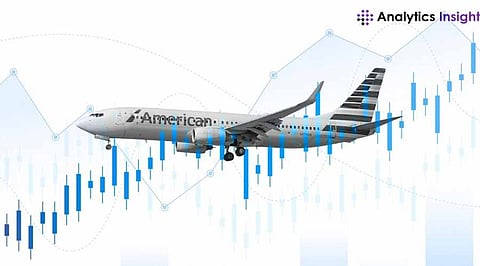

American Airlines stock performance has come under scrutiny following the announcement of weaker-than-expected fourth-quarter results. The company has faced significant challenges, including rising fuel costs and new labor agreements, which have placed considerable pressure on its profit margins. These factors have led to a dampened outlook for growth, affecting investor sentiment and stock performance.
The company reported a disappointing quarter, primarily due to rising fuel expenses, which continue to pose a significant challenge for the airline industry. The added impact of higher labor costs, stemming from recently negotiated agreements, further pressured American Airlines’ operating margins. These factors have made it difficult for the company to achieve meaningful earnings growth, despite exceeding some analyst expectations.
Management has maintained a cautious stance on capacity expansion, citing ongoing economic uncertainties and industry-specific challenges. While this strategy aims to balance supply and demand efficiently, it has also contributed to a muted growth outlook. Despite surpassing revenue passenger mile estimates and delivering better-than-expected earnings per share, the company’s overall weak guidance has led to stock volatility.
American Airlines is currently trading at a Price-to-Earnings (P/E) ratio of 52.1, a figure approaching a 10-year high. Such a high valuation metric, in the context of other financial indicators, suggests potential challenges ahead. The Altman Z-score, a measure used to assess financial health, is at a concerning level of 0.7, indicating potential financial strain. Additionally, the EV/EBITDA ratio stands at 18.12, reflecting a high enterprise valuation compared to its earnings before interest, taxes, depreciation, and amortization.
The Price-to-Sales (P/S) ratio, currently at 0.23, is near a two-year high. This ratio highlights a higher market valuation relative to the company’s sales, raising questions about the sustainability of this valuation in the face of industry headwinds. Despite these valuation concerns, the company is trading with a GF Value of $16.56, suggesting it may be fairly valued when compared to historical performance and industry benchmarks.
American Airlines has experienced notable stock volatility in recent months. The year-to-date performance indicates a decline of 2.15%, with the stock trading below its 52-week high of $19.10. This performance reflects both macroeconomic uncertainties and company-specific challenges.
Recent insider activity has also impacted investor sentiment. Over the past three months, insider selling has been observed, with no insider buying reported during the same period. This activity could be interpreted as a lack of confidence in the company’s short-term growth prospects by individuals closely associated with its operations.
Despite the current challenges, American Airlines possesses several strengths that position it as a key player in the global aviation industry. The company benefits from a substantial global network and a relatively young fleet, which offers operational efficiencies and competitive advantages. These factors allow the airline to maintain its position as a significant player in the highly competitive airline market.
American Airlines’ broad reach enables it to cater to diverse market segments, from domestic travelers to international passengers. This strategic advantage helps mitigate risks associated with regional economic downturns. Furthermore, the company has been investing in technological upgrades and customer experience enhancements, which could yield long-term benefits in terms of customer loyalty and operational efficiency.
The airline industry as a whole continues to grapple with several challenges that have also impacted American Airlines. Rising fuel prices have been a persistent issue, contributing to higher operating costs. In addition, global economic uncertainties and fluctuating travel demand have created a challenging environment for airlines to navigate.
The recovery in international travel, although steady, has not been uniform across all regions. American Airlines has faced difficulties in certain international markets where demand has been slower to rebound. This uneven recovery has added to the complexity of managing capacity and aligning operational strategies with market conditions.
Labor costs remain another pressing concern for the industry. The need to attract and retain talent has led to higher wage agreements, impacting the bottom line for many airlines, including American Airlines. These increased costs, coupled with rising fuel expenses, continue to squeeze profit margins.
While American Airlines has taken steps to address some of these challenges, including careful capacity management and fleet optimization, the outlook for growth remains uncertain. The company’s cautious approach to expansion reflects its efforts to maintain financial stability in an unpredictable operating environment. However, this strategy may also limit the company’s ability to capitalize on opportunities in a recovering travel market.
The risks associated with the company’s financial health are also notable. With a low Altman Z-score and a high EV/EBITDA ratio, there are concerns about the company’s ability to manage its financial obligations effectively. These metrics suggest a need for careful monitoring of cash flow and debt management to ensure long-term sustainability.
American Airlines faces a complex mix of challenges and opportunities as it navigates the current aviation landscape. While the company benefits from a strong market position and operational strengths, rising costs and financial health concerns present significant hurdles. Investors should carefully evaluate the risks and rewards associated with the stock, considering both its current valuation metrics and the broader industry context.
The aviation industry remains highly sensitive to external factors, from fuel prices to global economic trends. For American Airlines, the path forward will depend on its ability to address these challenges while leveraging its strengths to drive long-term value.
